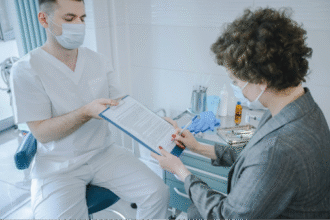One promising approach for treating alcohol use disorder is Medication-Assisted Treatment (MAT), a method that combines medication with behavioral therapies to address both the physical and psychological aspects of addiction. For many, this combination provides a more effective alcohol use disorder treatment and opens a path to long-term sobriety.
Although MAT has shown promising results, it is essential to recognize that there is no single cure for alcohol use disorder. Rather, it is a comprehensive treatment option that helps individuals manage their addiction and reduce the risk of relapse. In this article, we will explore how medication-assisted treatment works, its effectiveness in alcohol use disorder treatment, and whether it can truly lead to recovery.
Medication-assisted treatment involves the use of FDA-approved medications alongside traditional addiction treatment approaches like counseling and behavioral therapy. The medications used in MAT are designed to reduce cravings, ease withdrawal symptoms, and make it easier for individuals to abstain from alcohol. However, it’s important to note that MAT is not a standalone cure but part of a broader treatment plan that includes psychological and behavioral support.
The primary medications used in alcohol use disorder treatment include naltrexone, acamprosate, and disulfiram. Each of these medications works differently to assist with addiction recovery. Naltrexone, for example, blocks the euphoric effects of alcohol, reducing the urge to drink. Acamprosate helps restore the brain’s chemical balance after long-term alcohol use, while disulfiram creates an unpleasant reaction when alcohol is consumed, discouraging drinking.
The goal of MAT is not just to stop alcohol consumption but to help individuals achieve long-term sobriety by addressing the underlying causes of addiction and supporting their recovery journey.
How Medication-Assisted Treatment Supports Recovery
One of the main benefits of Medication-Assisted Treatment is that it addresses both the physical and mental aspects of alcohol addiction. Unlike other forms of addiction treatment that focus solely on behavioral changes, MAT acknowledges the physiological dependence that alcohol creates in the body. This makes it especially helpful for individuals who have struggled with chronic alcohol use or multiple relapses.
In many cases, those with alcohol use disorder face severe withdrawal symptoms when they stop drinking, making it difficult to maintain sobriety. These symptoms can include anxiety, tremors, nausea, and even seizures. MAT can help ease these withdrawal symptoms, making it easier for individuals to go through the detoxification process. This is a crucial first step in any alcohol use disorder treatment plan, as it prepares individuals for the psychological work that comes later in therapy.
Additionally, by reducing cravings, MAT helps individuals focus on the behavioral and emotional aspects of addiction treatment without being constantly distracted by the urge to drink. This increases the likelihood of long-term recovery and allows people to engage more fully in counseling and support groups.
The Role of Behavioral Therapy in MAT
While medication plays a crucial role in managing the physical symptoms of alcohol use disorder, it’s only one part of the overall addiction treatment process. Behavioral therapy is equally important in helping individuals understand the psychological and emotional factors that contribute to their alcohol use.
Group therapy and support groups like Alcoholics Anonymous (AA) are also integral components of addiction treatment. These programs provide individuals with a sense of community and accountability, which can be vital in maintaining sobriety. MAT enhances the effectiveness of these therapies by reducing cravings and helping individuals stay committed to their treatment plans.

















